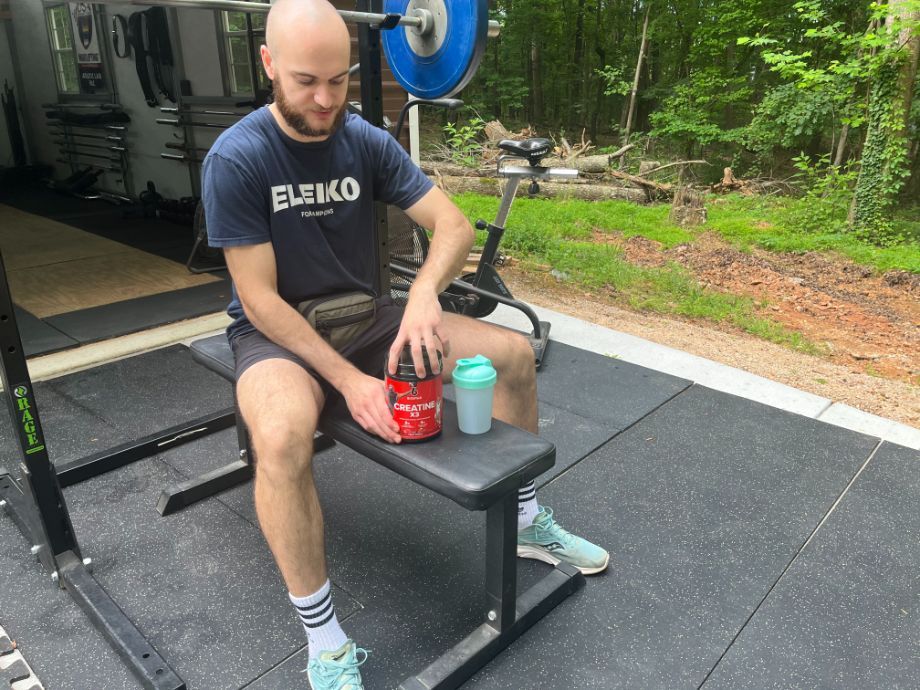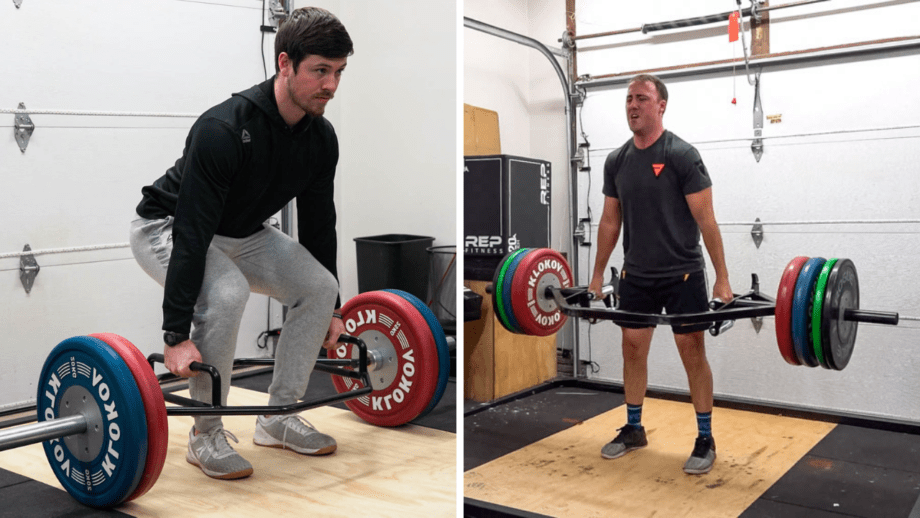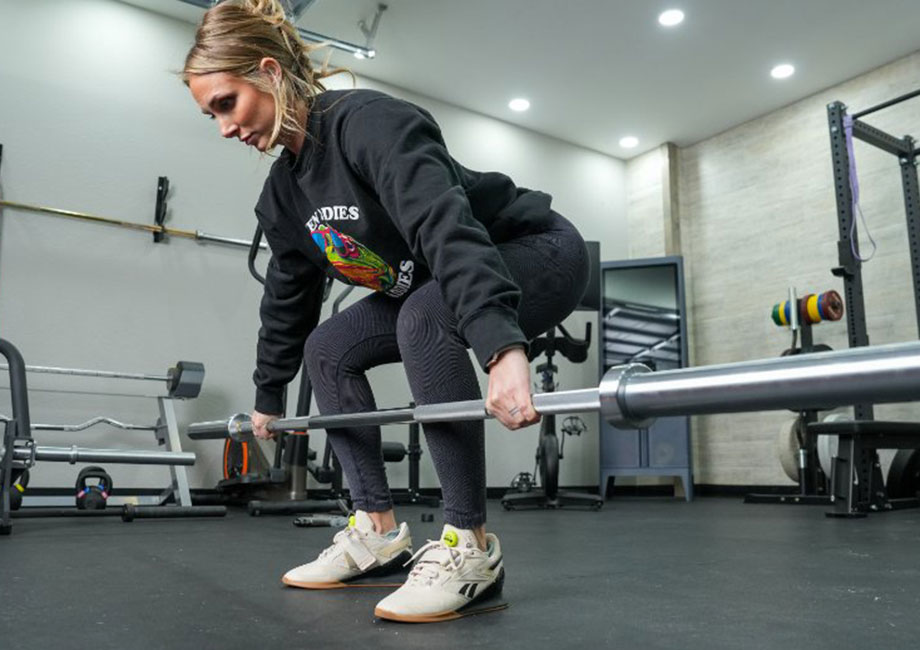When people hear the word creatine, they may think of a supplement used by bodybuilders to build muscle mass and improve overall athleticism. And while this product may lead to those effects, there is much more to it than that.
Creatine1 is an amino acid residing in the body’s muscle tissue and brain that may improve exercise performance, enhance strength and muscular endurance, promote muscle recovery, and improve brain health and cognition.
Creatine is found naturally in animal products such as chicken, beef, pork, seafood, and dairy. However, to utilize it for optimum muscle growth and peak athletic performance, you will need more than the amount you consume from food. This is where creatine supplementation enters the picture: When used in conjunction with strength training and weightlifting, creatine supplements can produce positive results.
If you’re wondering “how long does creatine stay in your system?”, this is the article for you. We’ll dive deep into the answer to this question, as well as discuss how to take creatine safely, with the help of insight from Jessica Bernstein, RDN.
How Long Does Creatine Stay in Your System?
Creatine is a dietary supplement consumed to improve athletic performance and increase muscle mass, including skeletal muscle.
There are several forms of creatine available, including the popular creatine monohydrate, as well as creatine HCL, creatine HMB, and even a patented form called Kre-Alkalyn. Creatine monohydrate is the least expensive and most researched. Creatine is available in a powder—mostly unflavored—or capsule form.
When creatine enters the body2, creatine transporters travel through the cytosol, providing energy for different processes in the body through a compound called adenosine triphosphate, or ATP.
Creatine is then filtered through the kidneys, and either stored in muscle mass as phosphocreatine or released as creatinine through urine2. While in the muscles, creatine pulls water into the muscle cells (this is why the muscles look bigger!).
RELATED: Best Pre-Workout for Muscle Gain
Creatine capacity3 is finite in the skeletal muscle, where the largest stores of creatine are, so taking more creatine does not necessarily equate to larger muscles, better athletic performance, or improved brain behavior.
Jessica says that once you stop taking creatine, the levels in your body will start to decrease, but the rate will depend on how long you’ve been taking the supplement—did you take it once and stop, or have you been supplementing with creatine for years—as well as other physiological factors.
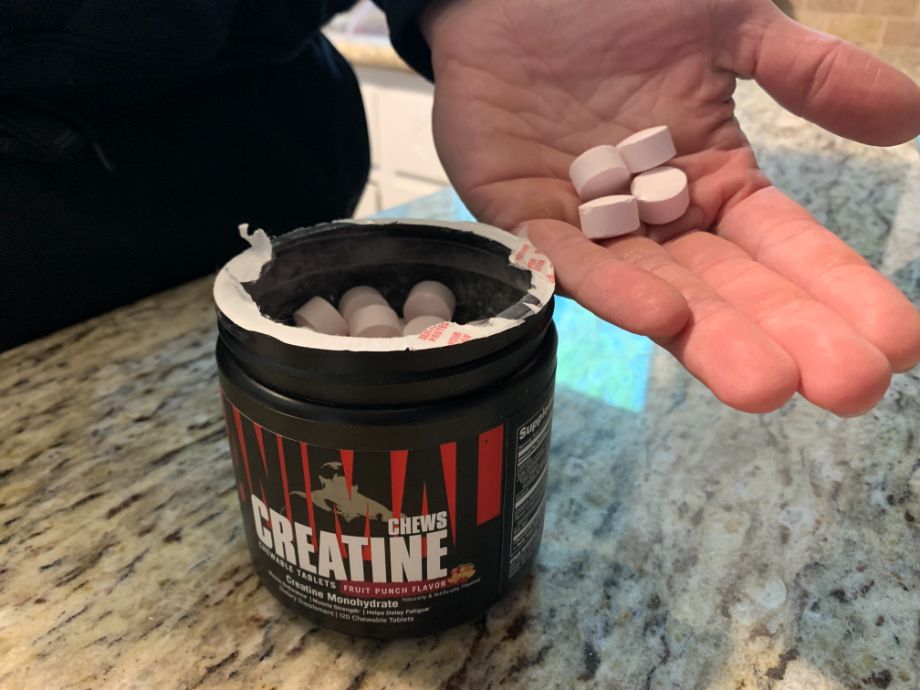
There are very few studies that discuss exactly how long creatine stays in your system, but we can provide an estimate. One 2004 Journal of Strength & Conditioning Research study4 of one male subject who ingested 20 grams of creatine for five days found that even after 30 days, muscle phosphocreatine levels had yet to return to baseline, but plasma and urine creatinine values had returned to pre-supplementation levels.
In another 2008 study in the European Journal of Applied Physiology5, time to peak concentration of a single dose of 2 grams of creatine took approximately 51 minutes, meaning that after that, levels start to decrease.
So, due to its short half-life, creatine is best taken regularly, and on a cycle, but we will get to that later on.
What Affects Creatine Retention?
If taken properly, creatine can be a highly effective supplement. While there are several different factors to take into account when beginning creatine, it is a safe supplement to take and experiment with, if you’re a healthy person. “There is no magic dose or timeline to follow and every person taking it will see different results,” Jessica says.
Factors including dosage, body mass index (BMI), and gender will help you understand how much creatine your body can retain and how to see the best results from your time supplementing with creatine.
Dosage
There are different approaches to take when it comes to the proper creatine dosage. Since there is no definitive protocol for creatine ingestion, the dosage is customizable to each individual.
Creatine loading phases start with a high dose first to maximize creatine stores quickly. The creatine load phase ranges from 5 to 7 days. Once the muscle creatine storage levels are saturated enough, you’ll enter the maintenance phase. A lower daily dose helps maintain saturation levels.
Grams of creatine taken by an individual varies, however, the typical dosage6 in the loading phase is 0.3 grams per kilogram of body weight per day, divided into four equal doses throughout the day. For most people, this dose of creatine is about 20 to 25 grams per day.
The recommended dosage for the maintenance phase is 3 to 5 grams per day. Once in the maintenance phase, creatine can be taken pre-workout and/or post-workout.
RELATED: The Science of Post-Workout Recovery
While it is more common to load creatine up front and then enter a maintenance phase, taking a small 3-to-5-gram dose daily can increase creatine storage levels in the body, albeit slower.
For example, a 225-pound person will take ~30 grams of creatine per day during the loading phase and ~3 grams of creatine per day during the maintenance phase.
(225 lb/2.2 kg = 102 kg, 102 kg X 0.3 g = 30.6 g/day)
(225 lb/2.2 kg = 102 kg, 102 kg X 0.03 g = 3.06 g/day)
Another example is a 135-pound person. They will take ~18 grams of creatine per day during the loading phase and ~2 grams of creatine per day in the maintenance phase.
(135 lb/2.2 kg = 61 kg, 61 kg X 0.3 g = 18 g/day)
(135 lb/2.2 kg = 61 kg, 61 kg X 0.03 g = 2 g/day)
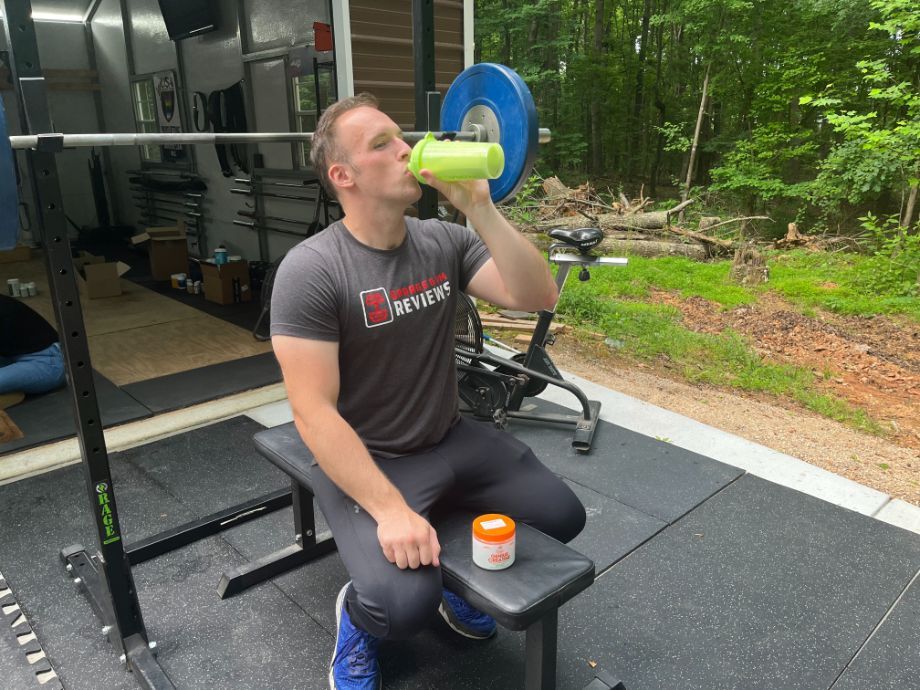
BMI
BMI is a numerical calculation that uses height and body weight to classify someone as underweight, within a “healthy” weight range, overweight, or obese. BMI can be an indicator of health, however, it is not the final determinant of health. It should not be used as a factor when supplementing with creatine and people of different body weights, shapes, and sizes can use creatine as a supplement.
A July 2009 study7 found a positive correlation between BMI and creatine clearance, meaning the higher the BMI, the more creatine cleared the body in 24 hours. This may just mean that someone with a higher BMI may need to supplement with a higher dosage of creatine regularly because more is leaving the body every day.
Age
Age may play a factor in how long creatine stays in your system, but more research is needed8. Healthy adults should have no issue with creatine supplementation, and while research on creatine hasn’t demonstrated any long-term adverse effects, teens should approach the supplement with care. It should be noted again that creatine is not a necessary supplement, meaning you do not need to supplement with it unless you want to.
Gender
Similarly to the best protein powder for men or women, regardless of gender, creatine provides males and females with the same opportunities and is safe for both healthy men and women to take. The most important component is finding the best creatine product for you.
A July 20219 study showed after surveying 399 adults ages 19 to 89, 45% reported taking creatine. However, among those, only 5% were female. The survey determined that men were most interested in taking creatine for its muscle recovery and increased strength effects.
Potential Side Effects of Creatine Supplementation
While the benefits of creatine make it sound like a dream, there can be negative side effects to taking any supplement. Documented negative side effects associated with creatine intake are minor, including weight gain, muscle cramps and strains, upset stomach, dizziness, and diarrhea. While side effects vary, weight gain is the most often talked about and potentially the reason some stay away from taking creatine.
As mentioned previously, creatine draws fluid into the muscles. More fluid equals more weight. However, this weight is not in the form of body fat. It will show on the scale, but it is water retention in the muscles or an increase in lean body mass (muscle). Water retention can look like an increase in muscle mass or feelings of bloating or swelling in the body.
RELATED: How to Lose Body Fat
There are some myths out there that creatine supplementation can cause kidney issues or even hair loss in healthy adults, but research has debunked this5.
In fact, a July 202010 study found that after supplementing with 0.3 grams per kilogram of body weight per day of creatine monohydrate for seven days, no changes were seen in the subject’s liver or kidney function. However, if you have pre-existing kidney or liver issues or high blood pressure, don’t take creatine until you talk to your healthcare provider. There can be some contraindications with medications, as well as concerns about potential side effects in general, in these populations.
Ways to Flush Creatine From Your System
Creatine is naturally filtered through the liver, then the kidneys, and lastly excreted from the body as creatinine through urine output. As you reduce your dosage, creatine will flush from your system naturally. However, if you eat animal products such as red meat or seafood, you will always have a small amount of creatine going through your body. There is no medical reason to flush creatine from your system faster than the natural process, Jessica says.
How Long Does Creatine Stay in Your System: Q&A
How do you flush out creatine?
The best way to flush out creatine is to stop using creatine and decrease the intake of foods containing creatine. Reducing protein intake and increasing fruits, vegetables, and fibrous foods is an easy way to help your body naturally decrease creatine levels.
Does creatine stay in your system all day?
Creatine stays in your system for as long as you are supplementing with it. Once you stop supplementing with creatine, the body will naturally convert the extra creatine to creatinine and flush it from your body through urine.
What happens if you stop taking creatine?
When you stop taking creatine, your body works to restore its natural energy and baseline creatine levels. It can take anywhere from two to four weeks for the body to deplete the excess creatine concentrations. During that time, you may feel more tired, but that feeling will go away once your body begins to use adenosine triphosphate (ATP) as its main energy source again.
References
- Creatine. Mayo Clinic. Feb 9, 2021.
- Kreider RB, Stout JR. Creatine in Health and Disease. Nutrients. 2021;13(2):447. Published 2021 Jan 29. doi:10.3390/nu13020447
- Persky AM, Brazeau GA, Hochhaus G. Pharmacokinetics of the dietary supplement creatine. Clin Pharmacokinet. 2003;42(6):557-574. doi:10.2165/00003088-200342060-00005
- Rawson ES, Persky AM, Price TB, Clarkson PM. Effects of repeated creatine supplementation on muscle, plasma, and urine creatine levels. J Strength Cond Res. 2004 Feb;18(1):162-7. doi: 10.1519/1533-4287(2004)018<0162:eorcso>2.0.co;2. PMID: 14971966.
- Deldicque L, Décombaz J, Zbinden Foncea H, Vuichoud J, Poortmans JR, Francaux M. Kinetics of creatine ingested as a food ingredient. Eur J Appl Physiol. 2008;102(2):133-143. doi:10.1007/s00421-007-0558-9
- Buford TW, Kreider RB, Stout JR, et al. International Society of Sports Nutrition Position Stand: Creatine Supplementation and Exercise. Journal of the International Society of Sports Nutrition. 2007;4(1). doi:10.1186/1550-2783-4-6
- Gerchman F, Tong J, Utzschneider KM, et al. Body mass index is associated with increased creatinine clearance by a mechanism independent of body fat distribution. J Clin Endocrinol Metab. 2009;94(10):3781-3788. doi:10.1210/jc.2008-2508
- Persky, Adam & Brazeau, Gayle & Hochhaus, Guenther. (2003). Pharmacokinetics of the Dietary Supplement Creatine. Clinical pharmacokinetics. 42. 557-74. 10.2165/00003088-200342060-00005.
- Benton MJ, Spicher JM, McCormick S. Community-Based Survey Exploring Use of the Dietary Supplement Creatine by Adult Non-Athletes. Nutrients. 2021; 13(8):2529. https://doi.org/10.3390/nu13082529
- Almeida D, Colombini A, Machado M. Creatine supplementation improves performance, but is it safe? Double-blind placebo-controlled study. J Sports Med Phys Fitness. 2020 Jul;60(7):1034-1039. doi: 10.23736/S0022-4707.20.10437-7. PMID: 32597619.


